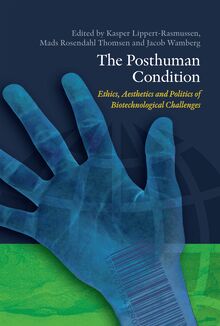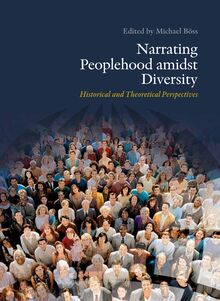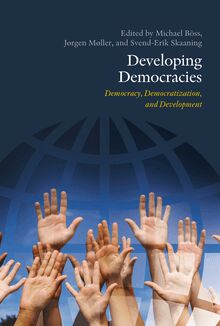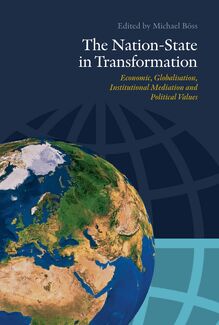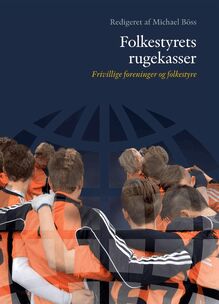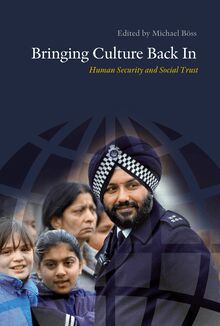-
 Univers
Univers
-
 Ebooks
Ebooks
-
 Livres audio
Livres audio
-
 Presse
Presse
-
 Podcasts
Podcasts
-
 BD
BD
-
 Documents
Documents
-
- Cours
- Révisions
- Ressources pédagogiques
- Sciences de l’éducation
- Manuels scolaires
- Langues
- Travaux de classe
- Annales de BEP
- Etudes supérieures
- Maternelle et primaire
- Fiches de lecture
- Orientation scolaire
- Méthodologie
- Corrigés de devoir
- Annales d’examens et concours
- Annales du bac
- Annales du brevet
- Rapports de stage
La lecture à portée de main
228 pages
English
Découvre YouScribe en t'inscrivant gratuitement
Je m'inscrisDécouvre YouScribe en t'inscrivant gratuitement
Je m'inscris
Obtenez un accès à la bibliothèque pour le consulter en ligne
En savoir plus
En savoir plus
228 pages
English
Obtenez un accès à la bibliothèque pour le consulter en ligne
En savoir plus
En savoir plus

Description
If biotechnology can be used to "upgrade" humans physically and mentally, should it be used at all? And, if so, to what extent? How will biotechnology affect societal cohesion? Can the development be controlled, or is this a Pandora's box that should remain closed?
These are but a few of the perplex questions facing scientists as a result of the increasing ability of technology to change biology and, in turn, profoundly change human living conditions. This development has created a new posthuman horizon that will influence contemporary life and politics in a number of ways.
The Posthuman Condition addresses the challenges of:
- Imagining a society where the properties of humans have shifted radically
- Assessing the scope of deploying technologies that are already underway
- Basing decisions on an ethical foundation that does not entail a concept of human nature
- Ascertaining the types of political action that can and should be taken in the face of this situation
- The anthology brings together researchers from a wide range of disciplines: biotechnology, medicine, ethics, politics, and aesthetics, and among contributors are Francis Fukuyama, Julian Savulescu, Maxwell Mehlman, John Harris and Chris Hables Gray.
These are but a few of the perplex questions facing scientists as a result of the increasing ability of technology to change biology and, in turn, profoundly change human living conditions. This development has created a new posthuman horizon that will influence contemporary life and politics in a number of ways.
The Posthuman Condition addresses the challenges of:
- Imagining a society where the properties of humans have shifted radically
- Assessing the scope of deploying technologies that are already underway
- Basing decisions on an ethical foundation that does not entail a concept of human nature
- Ascertaining the types of political action that can and should be taken in the face of this situation
- The anthology brings together researchers from a wide range of disciplines: biotechnology, medicine, ethics, politics, and aesthetics, and among contributors are Francis Fukuyama, Julian Savulescu, Maxwell Mehlman, John Harris and Chris Hables Gray.
Sujets
Informations
| Publié par | Aarhus University Press |
| Date de parution | 10 mai 2012 |
| Nombre de lectures | 0 |
| EAN13 | 9788771240696 |
| Langue | English |
| Poids de l'ouvrage | 5 Mo |
Informations légales : prix de location à la page 0,1550€. Cette information est donnée uniquement à titre indicatif conformément à la législation en vigueur.
Extrait
Edited by Kasper Lippert-Rasmussen, Mads Rosendahl Thomsen and Jacob Wamberg The Posthuman Condition Ethics, Aesthetics and Politics of Biotechnological Challenges
The Posthuman Condition
The Posthuman Condition
Ethics, Aesthetics and Politics of Biotechnological Challenges
Edited by Kasper LippertRasmussen, Mads Rosendahl Thomsen and Jacob Wamberg
A A R H U S U N I V E R S I T Y P R E S S
The Posthuman Condition MatchPoints 3 © the authors and Aarhus University Press Typeset by Narayana Press Cover by Jørgen Sparre (after Lisbet Tarp’s illustration) Image fromColourbox.com
ISBN 978 87 7124 069 6 ISSN 19043384
Aarhus University Press
Aarhus Langelandsgade 177 DK – 8200 Aarhus N
Copenhagen Tuborgvej 164 DK – 2400 Copenhagen www.unipress.dk
Published with the financial support of The Aarhus University Research Foundation
INTERNATIONAL DISTRIBUTORS:
Gazelle Book Services Ltd. White Cross Mills Hightown, Lancaster, LA1 4XS United Kingdom www.gazellebookservices.co.uk
ISD 70 Enterprise Drive Bristol, CT 06010 USA www.isdistribution.com
Contents
Posthuman Horizons and Realities: Introduction Kasper LippertRasmussen, Mads Rosendahl Thomsen and Jacob Wamberg . . . . . . . . . . . . . . . . . . . . . . . . . .
Notes on contributors . . . . . . . . . . . . . . . . . . . . . . . . . . . . . . . . . . . . . . . . . . . . . . . . . . . . . . . . . . . . . . . . . . . . . . . . . . .
PART I ∙ TECHNOLOGICAL SCENARIOS
Cyborging the Posthuman: Participatory Evolution Chris Hables Gray . . . . . . . . . . . . . . . . . . . . . . . . . . . . . . . . . . . . . . . . . . . . . . . . . . . . . . . . . . . . . . . . . . . . . . . . . . . . . .
How Close Are We to Being Able to Achieve the Transhumanist Vision? Maxwell J. Mehlman . . . . . . . . . . . . . . . . . . . . . . . . . . . . . . . . . . . . . . . . . . . . . . . . . . . . . . . . . . . . . . . . . . . . . . . . . . . .
Genetics – It Just Got Personal Lone Frank . . . . . . . . . . . . . . . . . . . . . . . . . . . . . . . . . . . . . . . . . . . . . . . . . . . . . . . . . . . . . . . . . . . . . . . . . . . . . . . . . . . .
The Medicine of the Future – Live Long and Prosper? Søren Holm . . . . . . . . . . . . . . . . . . . . . . . . . . . . . . . . . . . . . . . . . . . . . . . . . . . . . . . . . . . . . . . . . . . . . . . . . . . . . . . . . . .
PART II ∙ ETHICAL DILEMMAS
PostWhat? (And Why Does It Matter?) Sarah Chan and John Harris . . . . . . . . . . . . . . . . . . . . . . . . . . . . . . . . . . . . . . . . . . . . . . . . . . . . . . . . . . . . . . . . . . . . .
Treating Symptoms Rather Than Causes? On “Enhancement” and Social Oppression Kasper LippertRasmussen . . . . . . . . . . . . . . . . . . . . . . . . . . . . . . . . . . . . . . . . . . . . . . . . . . . . . . . . . . . . . . . . . . . . . .
7
19
25
38
48
60
75
88
A Liberal View on Liberal Enhancement Lene BomannLarsen . . . . . . . . . . . . . . . . . . . . . . . . . . . . . . . . . . . . . . . . . . . . . . . . . . . . . . . . . . . . . . . . . . . . . . . . . . .103
PART III ∙ ARTISTIC RESPONSES
Three Ways of Change: The New Human in Literature Mads Rosendahl Thomsen . . . . . . . . . . . . . . . . . . . . . . . . . . . . . . . . . . . . . . . . . . . . . . . . . . . . . . . . . . . . . . . . . . . . . .117
Artistic Consequences of Technology Insinuating Itself into the Human Body Gert Balling . . . . . . . . . . . . . . . . . . . . . . . . . . . . . . . . . . . . . . . . . . . . . . . . . . . . . . . . . . . . . . . . . . . . . . . . . . . . . . . . . . .128
Dehumanizing Danto and Fukuyama: Towards a PostHegelian Role for Art in Evolution Jacob Wamberg . . . . . . . . . . . . . . . . . . . . . . . . . . . . . . . . . . . . . . . . . . . . . . . . . . . . . . . . . . . . . . . . . . . . . . . . . . . . . . . .141
PART IV ∙ POLITICAL POSSIBILITIES
Agency or Inevitability: Will Human Beings Control Their Technological Future? Francis Fukuyama . . . . . . . . . . . . . . . . . . . . . . . . . . . . . . . . . . . . . . . . . . . . . . . . . . . . . . . . . . . . . . . . . . . . . . . . . . . . . .157
Biological Egalitarianism: A Defence Torbjörn Tännsjö . . . . . . . . . . . . . . . . . . . . . . . . . . . . . . . . . . . . . . . . . . . . . . . . . . . . . . . . . . . . . . . . . . . . . . . . . . . . . . .170
Enhancing Equality Julian Savulescu . . . . . . . . . . . . . . . . . . . . . . . . . . . . . . . . . . . . . . . . . . . . . . . . . . . . . . . . . . . . . . . . . . . . . . . . . . . . . . . .184
Index. . . . . . . . . . . . . . . . . . . . . . . . . . . . . . . . . . . . . . . . . . . . . . . . . . . . . . . . . . . . . . . . . . . . . . . . . . . . . . . . . . . . . . . .205
Posthuman Horizons and Realities: Introduction
Kasper LippertRasmussen, Mads Rosendahl Thomsen and Jacob Wamberg
Even though Homo sapiens during the last century and a half have, by and large, come to terms with being the result of a long and amazing evolution, until recently there has not been much speculation about the future prospects of humanity as we know it. The pace of Charles Darwin’s evolution by natural selection is very slow and what the successors to this mostadvanced species may turn out to be has been too speculative a question to really matter. However, in the past two decades, this perspective has shifted as a number of astounding technological developments have taken place. These developments have the power to completely overturn human evolution from its dependency on unplanned mutations and natural selection to an artificial evolution where conscious decisions and technological design matter more – thus setting the direction for an array of minor and major changes in both the human as well as other species. This shift promises a profound transformation of humanity and society as a whole, indeed of the entire life of our planet, and thus it has received a quite dramatic name: the posthuman. The interdisciplinary field emerging around the idea of the posthuman had a less radical forerunner in posthumanism, a movement already imploding the an thropocentric perspective of the humanities since the 1960s: either negatively as an antihumanistic deconstruction of the idea of the human subject, or positively as an ecological orientation focusing on life in all its varieties (Badmington 2011: 374). The posthuman thus signifies a move from posthumanism’s agenda, which was purely conceptual, to a mixed field of theory and practice where interventions of biotechnology supposedly will change the human species to something clearly separate from the human being we know. An intermediate step towards such a de velopment is often referred to as “transhuman” which signifies individuals that bear strong nonhuman traits, as for example cyborgs or chimeras (Savulescu 2010: 214). Although this notion concerns a passage in which the prosthetic enhancements of the body have not yet dissolved the idea of the human subject altogether, the transhuman is to an even greater degree than the posthuman permeated by utopian expectations.
Contents This page is protected by copyright and may not be redistributed
7
Prior to 1990 the term “posthuman” was rarely used, and even though science fiction and futuristic philosophies of technology have conjured up numerous visions of new humans, the idea of a radical change in life conditions and essential traits of the species did not set a broader agenda. In the past decade and a half, however, it has become a thriving subject where very different approaches and visions in tersect and where science and medicine as well as philosophy, law, art, literature and psychology all contribute with unique perspectives. It is a field that deals with both imminent uses of new technologies and more longterm conjectures about the human species. In both cases it produces scenarios that test the limits of what is commonly considered ethical. The posthuman essentially revolves around the key ethical dilemmas made acute by technological advances. In spite of recurrent doubts in many parts of societal debates as to whether technology actually improves civilization or not – from the ancient myths of civilization’s technologically conditioned decadence to Theodor W. Adorno, Maurice MerleauPonty and Martin Heidegger’s pessimistic notions of rationalistic technology colonizing the life world – it is a widely held belief in parliamentary politics, ‘third world’ development strategies and large parts of popular culture that most of the options technology facilitates are beneficial: that longer lives, better health, and accelerated actions are desirable. This confidence in technological progress is a significant heritage of the Enlightenment thinking, and in many ways it runs smoothly together with other aspects of the optimistic view of humankind’s progressive evolution. However, turning to the inherent rights for every human being expressed in the UN’s Universal Declaration of Human Rights (1948), the question is how progres sion towards aposthumanuniversalism can coexist with the idea of every human’s value as expressed in the declaration. Are individuals with an even higher dignity possible? Or is it so that human dignity is corrupted by biotechnological enhance ment of the human body? In a recurrent reference in this book,Our Posthuman Fu turefrom 2002, Francis Fukuyama has no doubts. Drawing upon dystopian visions such as those put forward in Aldous Huxley’sBrave New World(1932), Fukuyama insists that certain core values of the human subject are so complex and irreducible to simple dogmas that a biotechnological attempt to alter their foundations could lead to disastrous results (Fukuyama 2002: 218). It seems reasonable to not only relate Fukuyama’s worries to a distant future, but to keep the issue in mind even today. A number of biotechnologies have already presented us with a range of bewildering ethical questions, and promise to do so even more comprehensively in the future. The most important are the following developments:The advanced diagnosis of genes, which will affect which foetuses will be allowed to grow and enter the world as humans. Some selections will be seen as generally permissible, whereas others will be seen as a step towards intolerance
8
Contents This page is protected by copyright and may not be redistributed
and dehumanizing.Advances in medicinewill likely create the possibility of better health and longer lives, but could also lead to shortages of access to treatments and a risk of an even greater divide within societies and between the more and less developed countries.General longevitywill rise, and this process will increase the proportion of elderly people in society significantly and provoke questions of life quality in old age: What is a human life and is longer necessarily better? An other important development is the ability to makespare body parts. This already greatly advanced field is one in which necessary concerns will most likely query the limits of our (known) authentic human subject. Likewise, theinteraction between humans and machines,increasingly seen in e.g. the treatment of deafness and the enhancement of disabled people’s motor skills, could, when and if used by people with no disabilities, dissolve the borders between the autonomous human and its surroundings. Questions ofgenetic engineeringnow taking place on a small scale could quickly expand and spark dizzying ethical implications with for example three wouldbe parents use in an attempt to eliminate the risks of inherited diseases. In many other instances the therapeutic ends of this procedure are generally con sidered justified, whereas attempts to make enhancements are viewed sceptically. As a final development we see how the possibility ofcloninghumans technically is within reach. This is obviously closely connected to a whole host of challenges of technical risks – as well as questions of moral respect for humankind as a species. It is, indeed, fair to guess that many other techniques and dilemmas, now barely imaginable, are waiting in our horizon. Although the idea of a human essence in a Platonic sense has largely been given up philosophically, all these techniques ironically bring something like this essence to the fore again. However, its contours are not easily seen. Rather, the human constitutes a hazy shell confronted with imperatives of using technology to strengthen the human speciesand warnings about doing so.
The limits of knowledge and key conflicts
Advances in technology are the driving force behind the agenda of bioethics and the posthuman horizon, but the numerous uses and sideeffects are so farreaching that they affect almost every discipline – and with questions that can be answered from very different angles: Can beauty be part of a moral argument concerning choices one wants to make for oneself as well as for others? Is societal cohesion a valid reason for restricting the freedom of the individual? Would societies with huge differences in life expectancy be acceptable? How much of a ‘cyborg’ would we allow an individual human being to become? Nature clones – but can we? And of course, who are the “we” that should decide? The pervasive nature of such ques
Contents This page is protected by copyright and may not be redistributed
9
-
 Univers
Univers
-
 Ebooks
Ebooks
-
 Livres audio
Livres audio
-
 Presse
Presse
-
 Podcasts
Podcasts
-
 BD
BD
-
 Documents
Documents
-
Jeunesse
-
Littérature
-
Ressources professionnelles
-
Santé et bien-être
-
Savoirs
-
Education
-
Loisirs et hobbies
-
Art, musique et cinéma
-
Actualité et débat de société
-
Jeunesse
-
Littérature
-
Ressources professionnelles
-
Santé et bien-être
-
Savoirs
-
Education
-
Loisirs et hobbies
-
Art, musique et cinéma
-
Actualité et débat de société
-
Actualités
-
Lifestyle
-
Presse jeunesse
-
Presse professionnelle
-
Pratique
-
Presse sportive
-
Presse internationale
-
Culture & Médias
-
Action et Aventures
-
Science-fiction et Fantasy
-
Société
-
Jeunesse
-
Littérature
-
Ressources professionnelles
-
Santé et bien-être
-
Savoirs
-
Education
-
Loisirs et hobbies
-
Art, musique et cinéma
-
Actualité et débat de société
- Cours
- Révisions
- Ressources pédagogiques
- Sciences de l’éducation
- Manuels scolaires
- Langues
- Travaux de classe
- Annales de BEP
- Etudes supérieures
- Maternelle et primaire
- Fiches de lecture
- Orientation scolaire
- Méthodologie
- Corrigés de devoir
- Annales d’examens et concours
- Annales du bac
- Annales du brevet
- Rapports de stage
Signaler un problème
YouScribe
Le catalogue
Le service
© 2010-2024 YouScribe
